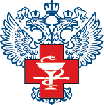 pirogov national medical surgical center
pirogov national medical surgical centernational center for researh and treatment of autoimmune diseases new jersey center for quality of life and health outcome research |
international symposium stem cell transplantation in multiple sclerosis: sharing the experience |
 |
 |
 |
 |
 |
 |
 |
 |
 |
 |
 |
 |
 |
 |
 |
| Intermediate-Intensity versus Low-Intensity Conditioning Regimens Followed by Autologous Haematopoietic Stem Cell Transplantation in Patients with Multiple Sclerosis: Results of Belarussian Study |
|
International Symposium "Stem Cell Transplantation in Multiple Sclerosis", Key-Note Lectures Book, 2009, p. 84-88 А. Uss, А. Fedulau, N. Milanovich, Y. Motuzova, V. Zmachinsky, A. Baida, P. Mitskevich, L. Drazhina Introduction Despite the use of the new immunomodulating, immunosuppressive drugs and natalizumab for the treatment of multiple sclerosis (MS), there is a certain proportion of patients for whom these therapies fail to control the disease. High-dose immunosuppressive therapy (HDIT) followed by autologous haematopoietic stem cell transplantation (AHSCT) is an intense form of immunosuppressive therapy for severe MS refractory to conventional therapy. The conditioning regimen destroys the aberrant disease-causing immune cells while haematopoietic stem cells regenerate a new antigen-na?ve immune system. Therefore, the toxicity and efficacy of AHSCT are dependant on the conditioning regimen. In general, there are three types of conditioning protocols used in the treatment of refractory MS: high-intensity, intermediate- and low-intensity regimens. Besides, there is a relation between regimen intensity and clinical outcome reported by the European Group for Blood and Marrow Transplantation. It was shown that high-intensity regimens were associated with a better clinical outcome, but, on the other hand, they were also associated with a higher transplant-related mortality. So, to maximize the therapeutic effect of AHSCT it is necessary to use regimens that are better tolerated. In our study we used both low- and intermediate-intensity regimens to establish whether they have similar clinical and side effects. Patients, Materials and Methods Patient Eligibility. Twenty-one patients were treated according to two different protocols. For 10 patients (7 males, 3 females) HDIT consisted of cyclophosphamide, antithymocyte globulin and methylprednisolon (CY+ATG+MP), and 11 patients (5 males, 6 females) got treatment according to the BEAM regimen. In the group CY+ATG+MP 7 patients had secondary-progressive MS, 2 - primary-progressive, and 1 patient - relapsing-remitting MS. In the BEAM group 6 patients had secondary-progressive MS, 3 - relapsing-remitting, and 2 - progressive-relapsing MS. The median age of patients in the CY+ATG+MP group was 36.4 (range, 22-45 years) and in the BEAM group - 28.4 years (range, 20-50 years). Patients were eligible if they were aged between 18 and 55 years, had MS according to the revised McDonald criteria, met the Poser criteria for clinically definite MS, and had failed to respond to at least 1 year' therapy with conventional therapy. Failure was defined as the deteriorating disability of > 1.0 points on the EDSS in the 12 months prior to transplantation in patients with an EDSS score of < 5, or by deteriorating disability of > 0,5 points in patients with an EDSS score of > 5 points; two or more clinical relapses with documented neurological changes that were treated with intravenous corticosteroids during the year before study entry; or at least one relapse treated with methylprednisolone, and evidence of active inflammation (ie, gadolinium enhancement on MRI of the CNS). The median follow-up time was 50.4 months (range, 30-61 months) in the CY+ATG+MP group and 15 (range, 3-28 months) in the BEAM group. The protocols were approved by the Ministry of Health of the Republic of Belarus. All patients gave written informed consent. Mobilization and Transplantation. Peripheral blood stem cells (PBSCs) were mobilized with cyclophosphamide (CY) 4 g/m2 in 1 day and daily granulocyte colony-stimulating factor (G-CSF) (filgrastim) 5 mg/kg subcutaneously starting from day +4 from CY until the completion of the harvests. The target number of harvested CD34+ cells was >2х106/ kg. Leukapheresis was initiated when the white blood count (WBC) rebounded to more than 1х109/L (usually 10 days after CY). Leukapheresis was carried out on "COBE Spectra" (COBE Laboratories, Lakewood, CO). Unmanipulated PBSCs were cryopreserved using standard techniques. For 11 patients the conditioning regimen consisted of the combination chemotherapy BEAM: BCNU 300 mg/m2 at day -7; cytosine arabinoside 200 mg/m2 and etoposide 200 mg/m2 from day -6 to day -3; and melphalan 140 mg/m2 at day -2. On day 0 cells were thawed and infused. Intravenous cyclosporin A (1 mg/kg) was also administered during the conditioning regimen to prevent neurologic exacerbation due to cytokine release. G-CSF was administered after transplantation when the neutrophil count was still below 0.5х109/L. Prednisone (5 mg/kg) was added to prevent cytokine release during CY administration to avoid the risk of neurologic adverse effects due to G-CSF. For 10 patients the conditioning regimen consisted of CY 120 mg/kg in 2 days (60 mg/kg day -3 and 60 mg/kg day -2). Rabbit ATG Fresenius (Germany) 30 mg/kg/day was administered at day -5, -4, -3. Methylprednisolone (5 mg/kg/day during days -5, -4, -3, with following decrease of the dose) was administered intravenously. Supportive care. Subjects were treated in a high-efficiency particulate air (HEPA)-filtered medical BMT unit of 9th Minsk City Hospital. They were fed a low microbial diet and treated prophylactically with 400 mg/day fluconazole and 800 mg/day acyclovir. During the period of intense myelosuppression, irradiated, leukocytedepleted packed red blood cells and single-donor platelets were administered to keep hemoglobin levels higher than 8.0 mg/dL and platelet counts higher than 20х109/L. Ciprofloxacin (500 mg orally twice a day) was given from admission until the absolute neutrophil count (ANC) was less than 0.5х109/L, at which time intravenous cefipime was administered until the ANC rebounded to more than 0.5х109/L. Fluconazole and acyclovir were administered daily and trimethoprim-sulfamethoxazole 3 days weekly for 6 months following HSC transfusion. Hematological and immunological recovery. Engraftment was defined as a polymorphonuclear cell (PMN) count above 0.5х109/L and a platelet (Plt) count above 20х109/L without transfusion. Lymphocyte subsets were evaluated at baseline, after mobilization, and at 1, 2, 3, and 6 months and 1 and 2 years after transplantation using a flow cytometric analysis according to the standard techniques. Clinical Evaluation. The clinical assessment included an EDSS evaluation and an MRI examination with gadolinium enhancement. Evaluation of disease status was performed prior to haematopoietic cell mobilization (baseline) and subsequently every 6 months after AHSCT. Neurologic progression was defined as an increase of ?1.0 points if the EDSS score was 5 or as an increase of 0.5 points if the EDSS score was >5 at entry without other explanations to account for a change in function after transplantation. Results Stem cell mobilization and collection. Mobilization was successful in all cases. Median number of collected CD34+ cells in the group CY+ATG+MP was 4.72х106/kg (range, 2.66х106/kg to 11.65х106/kg), and 5х106/kg (range, 3.1х106/kg to 15.0 х106/kg) in the BEAM group. No major clinical adverse events were observed during this phase; fever of unknown origin was reported in 6 patients. No clinical relapses occurred. Only 1 patient experienced a moderate hemorrhagic cystitis after CY administration, which required a specific treatment for 2 weeks. Toxicity. Unmanipulated grafts were infused without complications. Transfusion support was minimal, with a median number of red blood cell and platelet units transfused of 1 (range, 0 to 4) and 2.0 (range, 0 to 4), respectively for CY+ATG+MP group, and 3 (range, 0 to 7) and 1 (range, 0 to 7), respectively for BEAM. Infections were common following the immunoablative treatment for both conditioning regimens, all cases were successfully treated with intravenous antibiotic therapy. Number of episodes was comparable for both regimens. Median duration of in-patient hospitalization for the CY+ATG+MP group was 20 days (range, 16-33 days), and 20 days for the BEAM group (range, 19-27 days). Clinical Neurologic Outcomes. The patients in the group CY+ATG+MP were followed up for a mean of 50.4 (range, 30-61 months) months and the mean follow-up for the patients in the BEAM group was 15 (range, 3-28 months) months. After CY+ATG+MP five patients experienced continuous neurologic stabilization in disability following transplantation and two patients had improvement after AHSCT of 1 and 3.5 points in the EDSS score. Three patients had gradual progression with EDSS scores increase of 0.5 points within 24 to 48 months after transplantation. One of them progressed after the period of improvement of 48 months in 0.5 points according to the EDSS score. Nine patients after BEAM remained neurologically stable to the time of the last follow-up. One patient had improvement in 1 point in the EDSS score, but 1 patient had progression after 6 months in 0.5 points in the EDSS score. Progression-free survival, defined as no increase in EDSS score of at least 1 point between pretransplantation and last post-transplantation assessment, was 100% almost up to 61 and 28 months of follow-up in CY+ATG+MP and BEAM groups, respectively. MRI evaluations were obtained at baseline, 6 months, and every year after AHSCT. All scans were reviewed by the same neuroradiologist, and comparisons were made between baseline and subsequent scans in an unblinded manner. After CY+ATG+MP only one patient developed new enhancing lesions on gadolinium-enhanced (Gd) brain MRI and MRI of patients after BEAM were without new Gd-enhanced lesions. Discussion We report the results of AHSCT for different forms of MS. After a mean follow-up period of 50.4 and 15 months in CY+ATG+MP and BEAM groups (respectively) progression-free survival in both groups was 100%. Some patients improved, but in most cases, the EDSS score remained stable. This is a remarkable result, taking into consideration that these patients had usually worsened by at least 1 point on EDSS in the year before transplantation, despite the administration of conventional therapy. Both conditioning regimens have an acceptable toxicity, are well tolerated, do not show any mortality and clearly reduce the progression of MS in the period up to 61 and 28 months of followup in CY+ATG+MP and BEAM groups, respectively. There was no significant difference in duration of engraftment recovery and duration of inpatient hospitalization for both groups.
Thus, both low- and intermediate-intensity conditioning regimens followed by AHSCT for patients with refractory MS are a feasible procedure that not only seems to prevent neurological progression, but in some cases appears to reverse neurological disability. |
|
© KMart |
(last update) 28/10/2009 |